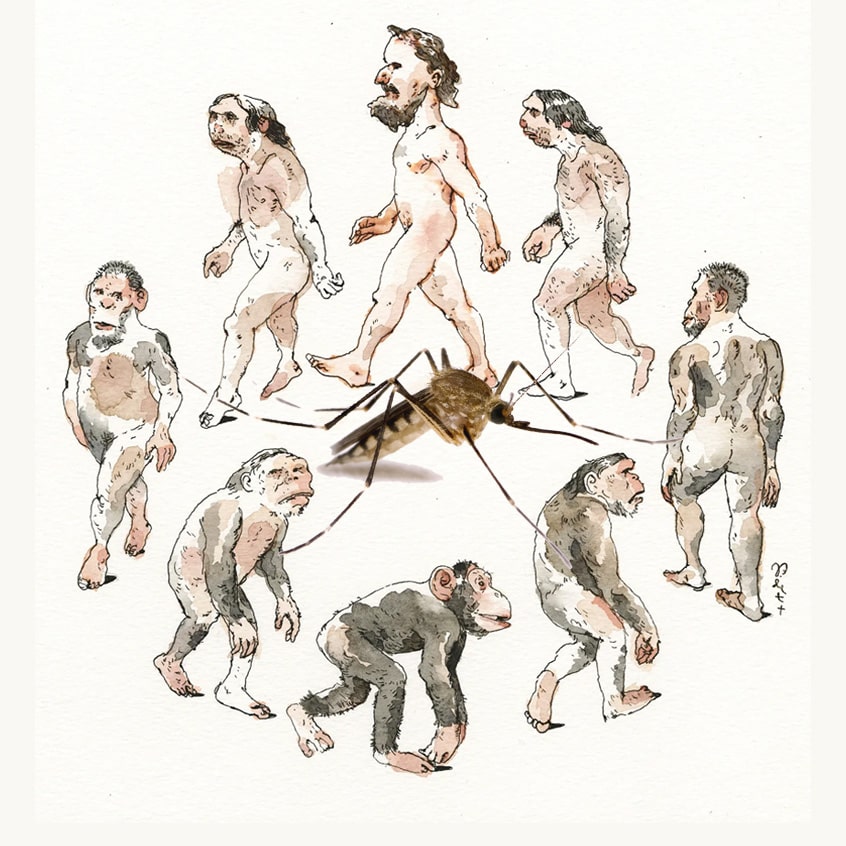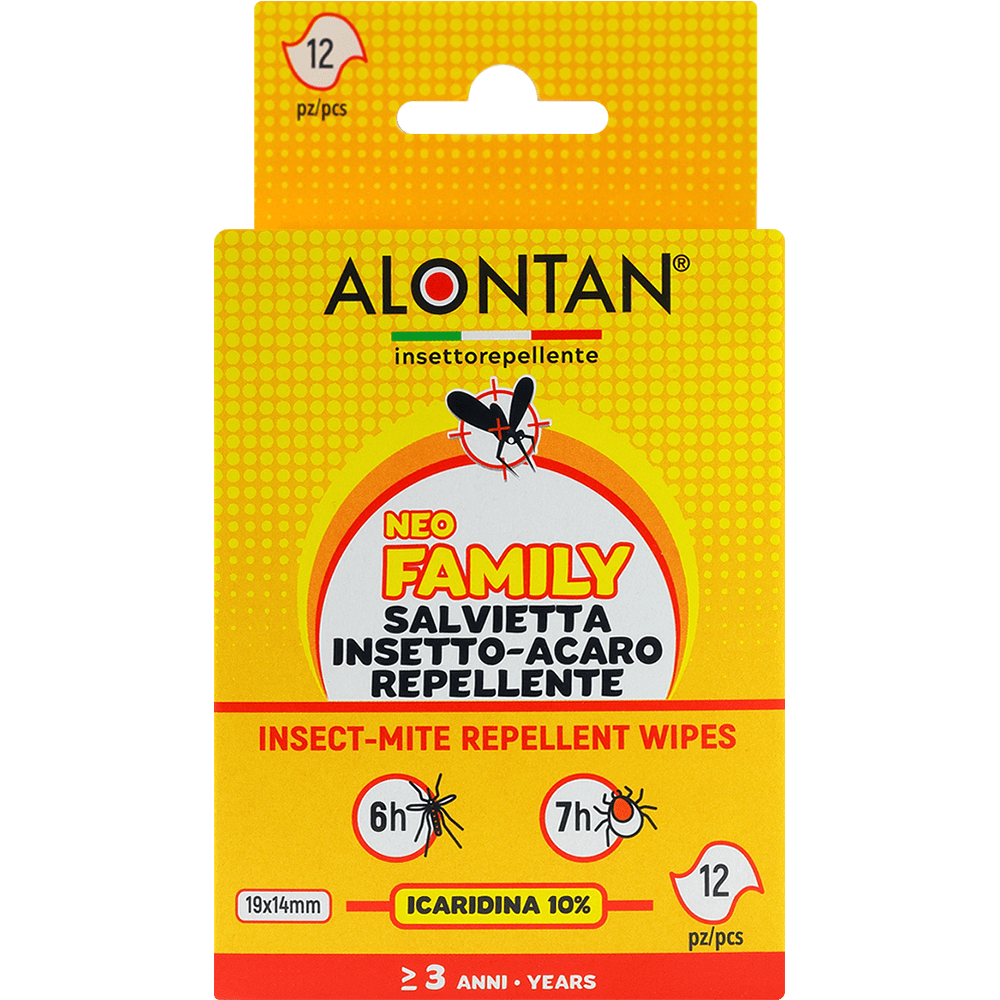
Alontan Neo Family
INSECT REPELLENT WIPE
-
ALONTAN NEOFAMILY is an insect repellent wipe moistened with an anti-mosquito, tick and mite repellent liquid containing 10% icaridin.
ALONTAN NEOFAMILY protects immediately after application.
Protect from tiger and common mosquito bites for 6 hours, protect from ticks for 7 hours, protect from tropical mosquito bites for 2 hours.
The 10% icaridin formulation is indicated for the entire family. It can be used from 3 years of age.
-
Application: rub the wipe evenly over the skin to be protected, avoiding eyes and mucous membranes. The treatment can be repeated up to twice a day.
Protects against diseases transmitted by arthropods and their vectors. Read the Istisan Report.
-
Do not use on damaged or reddened skin, on lips, near eyes. Do not use during pregnancy or lactation.
Contains a “bitter” substance to discourage any attempts at ingestion by children.
Non contiene gas propellenti dannosi per l’ambiente.
Contains 12 sealed wipes in single pouch.
Did you know...?
Evolutionary
adaptation of
the mosquito


Masters of evolutionary adaptation
According to a popular apocryphal quote by Charles Darwin, “it is not the strongest species that survives, nor the most intelligent, but the one that is best adapted to change”. Mosquitoes (and the infections they spread) perfectly embody the significance of these words. Mosquitoes are true masters of evolutionary adaptation. They can evolve and adapt quickly to their surroundings within a few generations. Between 1940 and 1941, for example, as German bombs rained down on London, isolated populations of Culex mosquitoes were confined to subway bomb shelters along with the city's inhabitants. These mosquitoes trapped in shelters quickly adapted by feeding on the blood of mice, rats and humans instead of birds, and today are a different species from their surface-dwelling counterparts. In less than a century they have made changes that would normally take thousands of years to evolve.
Source: Winegard, Timothy Charles “THE MOSQUITO: a human history of our deadliest predator”. New York: Dutton (2019).



